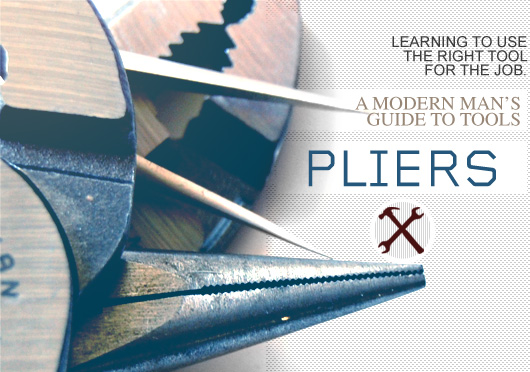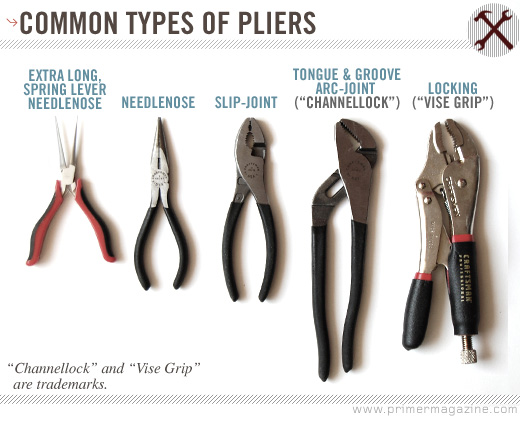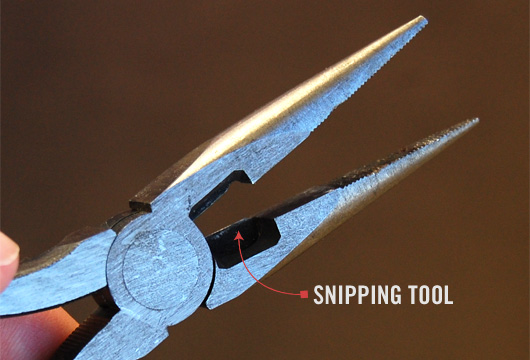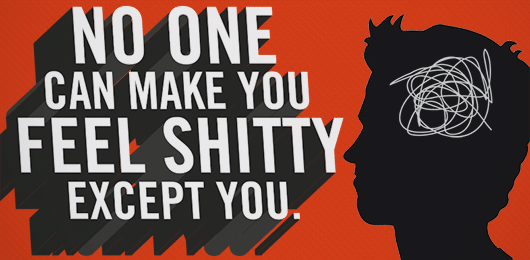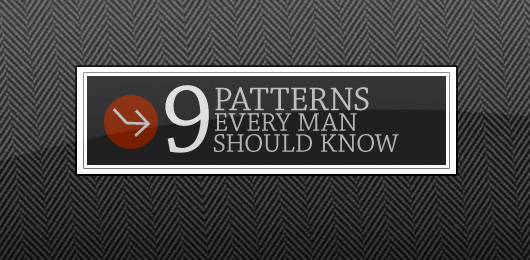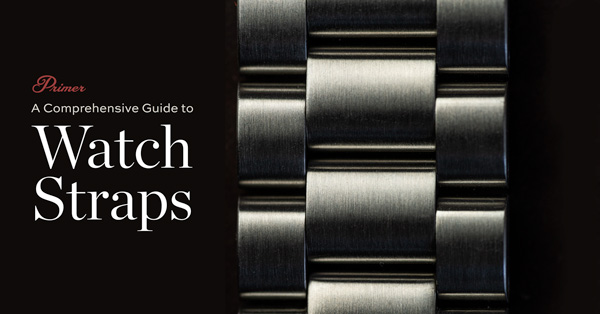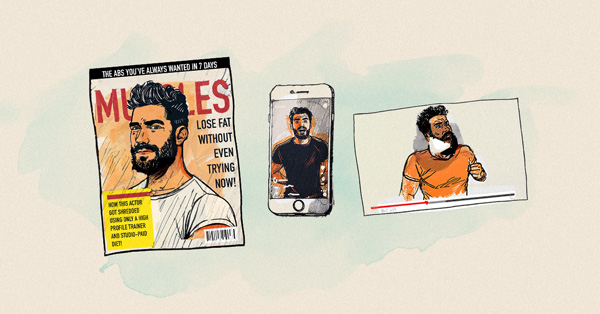A Modern Man's Guide to Tools
A very simple and ancient invention, pliers are basically two pieces of metal, joined together near the center. One side is the handle, the other side is the nose. When you squeeze the handle side, the nose squeezes accordingly. There are several types of pliers, and the most common are flat-nose and needle-nose. Two other important pliers are electrical (wire strippers/crimpers) and Vise Grips. Tweezers, salad tongs and scissors are close cousins.
Pliers are used to grab and “ply” (manipulate) a thing. You are most likely to use them to bend or “crimp” a wire; or to squeeze or hold something that is too small, too sharp, too hot, or too corrosive for your fingers. You might also use pliers to reach into a place where your fingers can’t — electronic devices, water pipes, and such.
You are likely to need pliers for:
- Soldering
- Wiring of electronics, recording studios, or home stereo systems
- Bending of thin objects
- Any project that includes small parts
- Holding a nail or screw in place while hammering or drilling
- Nose hair
The technique for pliers is quite simple: squeeze. For extra squeeze — along with a lock — use Vise Grips. Vise Grips, (or more generally “locking pliers) are easy to use and act as a third hand. To use, close the pliers and turn the knurled knob until the jaws open just slightly smaller than the size of the object you're going to use them on. Then, open the pliers and squeeze them around the object. If the knob was adjusted correctly, they should stay in place securely.
Wire strippers use different gauges, depending on the wire, to strip away the rubber or plastic coating from a wire, leaving the metal of the wire exposed.
Adjustable pliers like slip-joints and Channellocks are those that have a sliding joint, allowing the jaw to open wider to accommodate larger objects. You should have the joint in the smallest position as possible so you can apply the maximum amount of pressure to keep the grip as snug as can be. Large “Channellock” pliers are generally longer to give you more strength through leverage.
In general, be careful what you’re choosing to squeeze. It’s easy to damage wood, for example, by squeezing too hard. Fingers and other body parts should also remain on the handle side of the pliers.
The main thing to avoid with pliers is using them as a wrench. This is a common error, borne of laziness and complacency. It’s bad for the nut, and it’s the wrong tool for the job, so please don’t do it.



